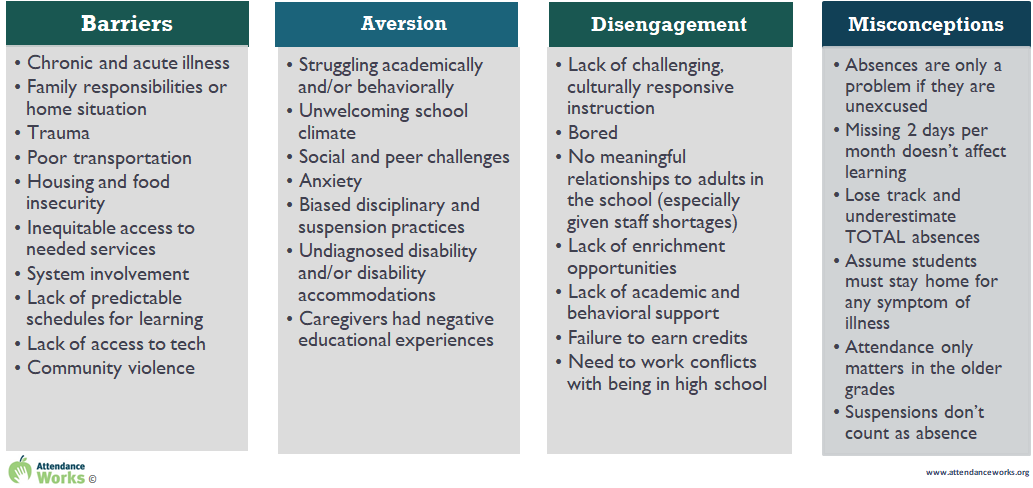Root Causes
Data on chronic absence can help identify which students, or groups of students, might be in need of additional support. Once you know which students are at risk due to poor attendance, take stock of what you know about the reasons they do or don’t attend school.
Reasons for absences typically fall into four broad categories: Barriers to attendance, aversion to school, disengagement from school and misconceptions about the impact of absences. See figure below.
For individual students, use our Student Absenteeism Worksheet to organize your thoughts and what your team has learned from regular interactions inside or outside the classroom about the student. Understanding why students are absent as well as what motivates the student to attend can help determine the best course of action.
Student Absenteeism Worksheet
The five minutes you and your team spend filling in the worksheet can help you think about what you know or might need to learn from a student or their family when developing an effective intervention plan.
In some communities certain reasons for absence affect a large number of students. For example, food insecurity often affects large numbers, not just individual students. The solutions in this case could include evidence-based interventions such as Breakfast in the Classroom. If you find there are a large number of chronically absent students, consider first applying the strategy to a manageable number. Then, you can use the experience to determine how to help more students.
